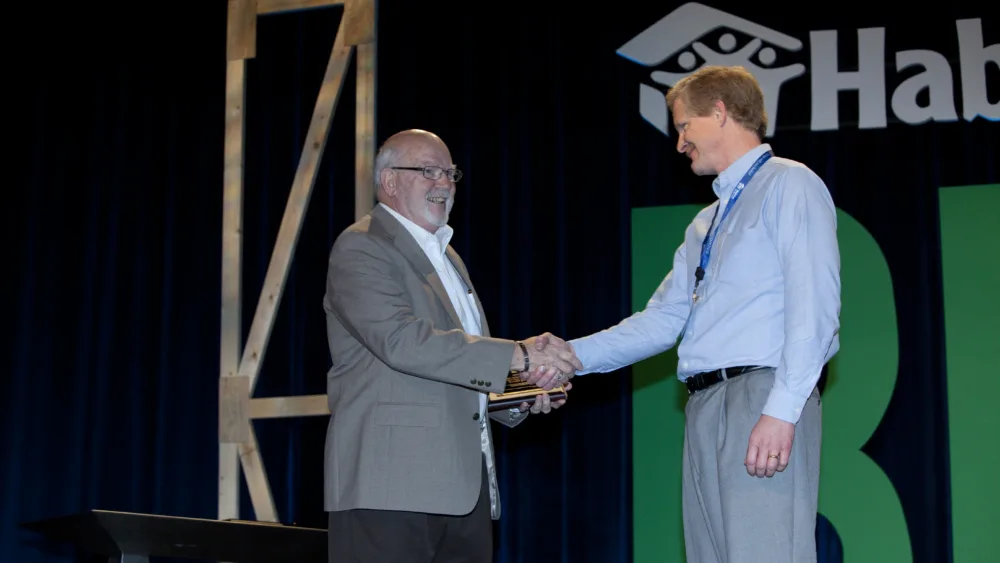David Mullin, CEO of Green Mountain Habitat for Humanity, has been with the organization for over 20 years. When he was first hired, he was the only employee, and he worked in the basement of a law firm. Now, the organization has over 50 employees and builds between five and six houses a year.
Green Mountain Habitat for Humanity began in 1984 as an all-volunteer organization, and they built one house every one to two years. 2024 is Green Mountain Habitat’s 40th anniversary. Board members hired David Mullin in 2002, and he has been a champion for affordable homeownership in Vermont.
We recently sat down with David to learn more about his experience at Green Mountain Habitat, as he has seen the organization go through significant periods of change and increase its capacity for more impact.
Q: What drew you to Green Mountain Habitat?
A: I had never worked for a nonprofit before, and I thought my for-profit business experience could be put to good use. I wanted to help grow the organization and to help increase the number of homes built annually. The need for housing in Vermont is so critical, so the mission really inspired me as well.
Q: How have you seen the organization change over the past 20 years?
A: The most significant change has been going from building one home every one or two years to building up to five or six homes a year. That has been such a great change, but it comes with other challenges. However, it is great that we can help more families achieve homeownership each year.
Another big change has been opening the three ReStore locations to help us raise funds for building homes. The homebuilding business has become significantly more complicated and expensive, but our dedicated, talented staff have been able to forge ahead.
Q: What do you enjoy most about working at Green Mountain Habitat?
A: Habitat for Humanity is a complicated nonprofit. We are a land developer, a retail business, a fundraising organization, and a mortgage company. We are doing most of the construction work using hundreds of fantastic volunteers. The thing that I enjoy most is that there are always opportunities and challenges. Every day is different.
Q: What are some upcoming projects that you are most excited about?
A: We are very excited for our large developments which include eight homes in Underhill (in partnership with the United Church of Underhill), sixteen units in South Burlington, and twenty units in Hinesburg. With all these upcoming projects, we have been collaborating with various community partners and towns. We are looking forward to bringing together partner families, volunteers, and other organizations for these exciting projects.
We are also a growing organization, so we have hired several new staff members in the past couple of months. They are helping us be able to build more and more homes. We can’t wait to expand our impact across our service area.
Q: What will the next 40 years of Green Mountain Habitat look like?
A: The lack of affordable homes available in Northwestern Vermont is making it very difficult for local families to afford their rent, food, and healthcare. Our partner families cannot afford the down payment for a house. They are often living in substandard housing, so the need for affordable homeownership is more relevant than ever.
We have developed a great team of dedicated, hardworking staff in all areas of our organization. We are optimistic that the dedicated staff and the supportive, involved community can help more families move into a safe, decent, and affordable home of their own.


Comments are closed.